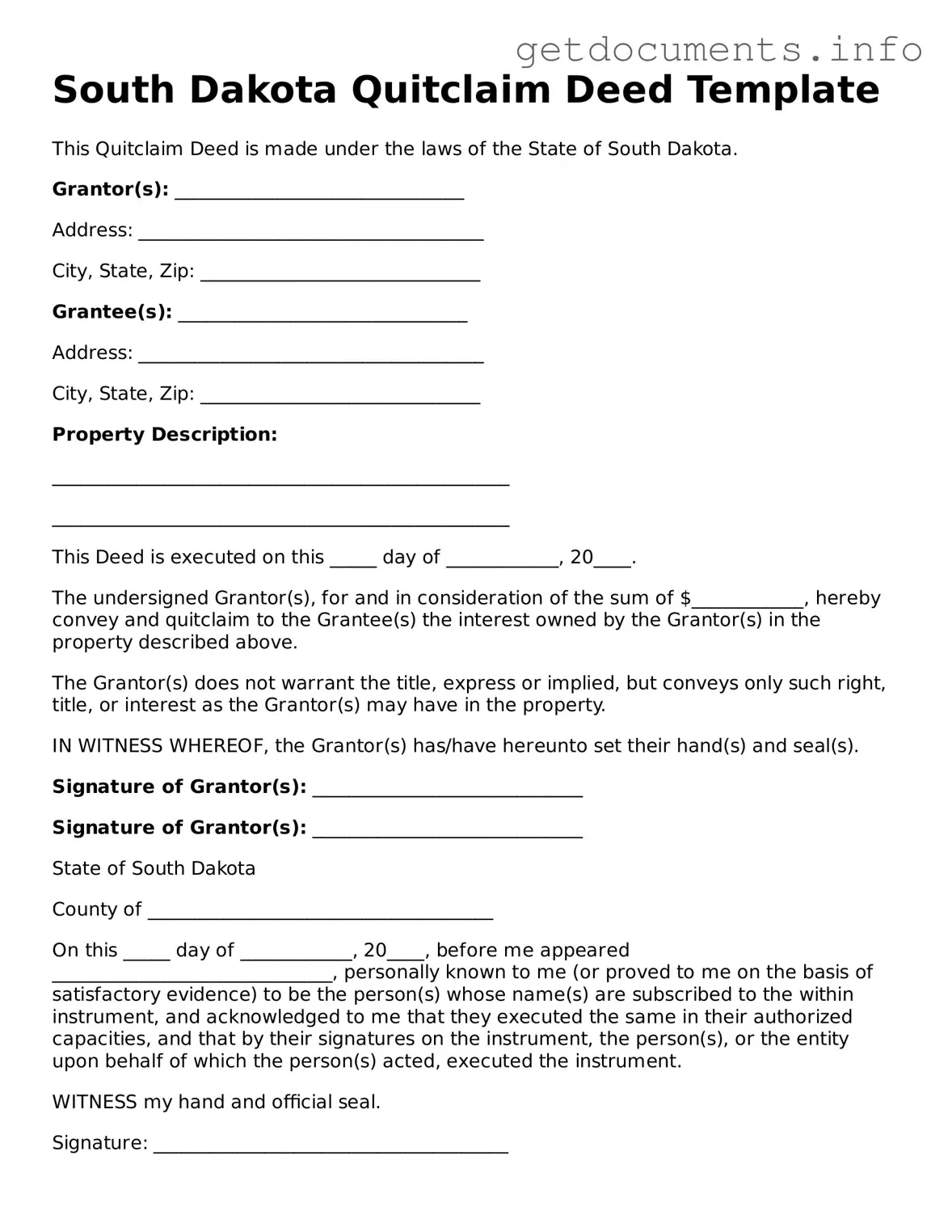When it comes to transferring property ownership in South Dakota, understanding the Quitclaim Deed form is essential for both buyers and sellers. This straightforward legal document allows an individual, known as the grantor, to relinquish any interest they may have in a property to another party, called the grantee. Unlike other types of deeds, a Quitclaim Deed does not guarantee that the grantor holds clear title to the property; instead, it simply conveys whatever interest the grantor possesses, if any. This means that the grantee assumes the risk of any potential claims or issues related to the property. The form typically includes key details such as the names of the parties involved, a description of the property being transferred, and the date of the transaction. Additionally, it may require notarization to ensure its validity and acceptance by local authorities. With its simplicity and efficiency, the Quitclaim Deed is often used in various situations, including transferring property between family members, resolving title issues, or during divorce settlements. Understanding the nuances of this form can help individuals navigate property transactions with greater confidence and clarity.
